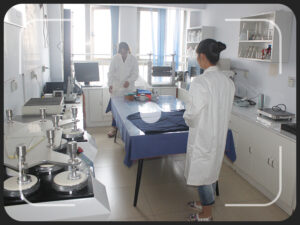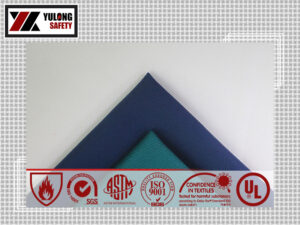The Processing Technology of The UV for Textiles
The processing technology has a relationship with its final function. people usually has a high expectation for softness and suitability, so it is better to adopt exhaustion methods or padding methods to exert UV interdicting agent as clothing materials. Due to the weak touch requirement it is better to adopt coating method as decoration or domestic-used fabrics. From the point of technology it is best to adopt the exhaustion and padding methods, which has a weak influence for fabric quality, the style of fabrics, shrinkage and strength and can work with other functional processing technology.
The purpose that we research is the UV influence for the clothes in summer, so we pay more attention on the padding processing technology.(such as the quantity for interdicting agent, the preparation of work fluid, the temperature and time)
Due to most of the ultraviolet absorbent is insoluble in water and lack of affinity to natural fabrics such as cotton, so only adopt adhesive or colophony to fixing the UV interdicting agent on the fabric surface. The varieties of Colophony has certain influence on processing the fabric style in absorption, and in view of molecular distillation for the amount of UV absorber and and sublimation and other reasons, which are the key content for the implementation of this processing.
The interdicting agent which used in the exhaustion processing can add a little UV scattering agent in addition to use the absorbent in order to strength the good effect for UV interdiction. In order to make the interdicting agent adsorb on the surface of fabrics firmly, it is so important to select the suitable adhesive agent, and the adhesive agent should has no bad effect on the ability of UV proof of the interdicting agent and the style for fabrics.(such as the softness,adsorption air permeability, tensile strength.)
It is composed of manys kinds of components (absoption,scattering agent, adherent agent,softness agent and so on) for the interdicting agent of UV,and it also require that the interdicting agent can disperse in water evenly and can have the certain infiltration ability. The UV interdicting agent should adoptnon ionic surface active agent to make the good effect of anti-UV in the domain290-400nm wavelength.
Related recommendations
-
Yulong Hot Sale Flame Retardant Waterproof Fabric
1409Flame retardant waterproof fabrics are processed through special processes. This fabric can be compatible with both waterproof and fireproof functions at the same time, breaking through the concept of water and fire incompatibility. These two f...
View details -
-
The protective effect of flame retardant clothing
1690Yulong Textile, focus on fabrics and clothing. We can meet the customized needs of various customers according to the requirements of the working environment. We can add anti-static, waterproof, anti-arc, fluorescent, anti-acid and alkali and othe...
View details -
Features of FR Lenzing fabric
20761. Fr Lenzing fabric has permanent flame retardant, non melting, non dripping, non-toxic combustion, excellent chemical resistance and excellent mechanical properties; 2. Fr Lenzing fabric has excellent fire and flame resistance, arc resistance...
View details
 fireproofworkwear
fireproofworkwear




HelloPlease log in